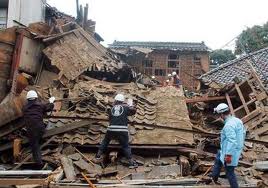Mass Burials Cause Grief In Japan
In Higashimatsushima, hollows were dug in the muddied field of a former recycling center. In Yamamoto, unceremonious trenches were tunneled in a vegetable patch. In Minami Sanriku, once a quiet fishing village, tracts of forest have been razed to expose enough bare land for a makeshift cemetery that will accommodate its share of the 11,000 confirmed dead in the three weeks since an earthquake and tsunami struck Japan's northeast coast.
As Japanese towns pitched into near nonexistence by the convulsions of earth and sea collect what dead can be found, they are also holding the first mass burials in local memory. From the silenced shore now come the sounds of heavy machinery scraping out wide ditches that will receive, at least temporarily, the mounting backlog of bodies. The national custom of cremation — 99.9% of the Japanese who passed on in 2009 were cremated, according to the Health Ministry — is unsustainable when faced with the vast human toll. There is not enough kerosene to burn the departed, dry ice to preserve them or petrol to carry them to places less debilitated. Minami Sanriku, which has likely lost over half its inhabitants, has the resources to cremate but seven a day. There, as elsewhere, a number of survivors have taken their dead home, unwilling to return them to the ground.(See TIME's full coverage of Japan's triple disaster.)
In a manifold catastrophe that ruined the coast's most solid structures, Japan's delicate mortuary rites could not have hoped to endure. By tradition, the deceased receives an elaborate wake and funeral ceremony. Before the family and in the Buddhist way, the body is surrendered to the furnace for cremation. It is not burned entirely to ash, but reduced to small bone fragments, which the relatives, in pairs, pick out with chopsticks and transfer gently to a waiting urn. The foot bone is the first to be contained. The last, called the "Adam's apple" in Japanese, is a chip of the upper spine whose shape suggests a Buddha seated in meditation. The urn will often spend a month in the home before being interred in a family grave. As land becomes scarcer and relations less reliable for the upkeep of plots, people's remains are increasingly gifted to the wind.
Click here to read more.


